While the Mera Peak Climbing Adventure is beautiful in its all essence, your experience of trekking there becomes even more beautiful with us. By the time we take you to the base camp and bring you back, we take one step ahead to offer you a beautiful experience. We keep your safety and happiness is our top priority and you will experience the same during the trip.
Departs from Kathmandu, Nepal
Nepal's Highest Trekking Peak
Mera Peak Climbing holds the title of Nepal's highest trekking peak. It resides at an elevation of 6476 meters. Peak climbing in Nepal nourishes the grandeur and glory of the majestic Mera Peak. Climbing Mera Peak Nepal is a blessing to adventure seekers and fitness enthusiasts. Nestled in the Mahalangur section of the Sagarmatha region, southeast of Mount Everest, this peak is accessible to those with good physical fitness and basic mountaineering skills. The journey typically begins from Kathmandu to Lukla, followed by a trek through the picturesque Hinku Valley, leading to the ascent via the Mera La Pass. Climbers are treated to exceptional dramatic views from the Mera summit climbing, showcasing five of the world's highest mountains: Mount Everest, Lhotse, Makalu, Kangchenjunga, and Cho Oyu. With its blend of non-technical climbing and high-altitude trekking, Mera Peak presents a unique opportunity for trekkers to experience the majesty of the Himalayas.
- Mera Peak North (6,476m/ 21,247ft)
- Mera Peak Central (6,461m/21,198ft), and
- Mera Peak South (6,065m/ 19,898ft).
Overview
Mera Peak Climbing is one of the most popular climbing adventures in the Himalayas. Thousands of peak climbers aim to reach the top of Mera Peak (6,476m) every year. The beautiful mountain stands amidst the vast range of mountains in the Everest region.
Although it is not a long climbing expedition like the Everest Expedition, it gives you the thrill of climbing a snow-capped mountain. The climbing peaks in Nepal are below 7000 meters and they are popular as trekking peaks. Since climbing these peaks is not highly technical stuff like the Manaslu Expedition and such, it is a much easier climbing adventure.
What You Will See During the Climb to Mera Peak with Nepal Climbing Adventure?
Mera Peak is in the Everest region of the Himalayas. It involves a trekking adventure to the base camp of the peak and then a day of climbing adventure to the top and return. The trek starts in Lukla on a different trail than the one to the Everest Base Camp. After a few days of traversing a peaceful trail through the Hinku valley takes you to the base camp of Mera Peak.
The actual climbing activity is just a day's adventure. You can make it to the Mera summit climbing and back to base camp on the same day. Although you will need to have some basic climbing skills, you will not need to go on the extreme technical skills like in the mountaineering Mera peak climbing expedition.
Trekking mera peak through a quiet trail towards the base camp offers an incredible chance to be in nature and mountain wilderness. The view of magnificent mountains in the surroundings along the trail is simply breathtaking. Standing at the top of Mera Peak and looking around in the mountainous surroundings is an unmatchable experience.
Reasons this Mera Peak Trip Becomes an Experience
Nepal Climbing Adventure always strives to offer an adventure traveling experience that you can cherish. While the Mera Peak Climbing Adventure is beautiful, your experience of trekking there becomes even more beautiful with us.
By the time we take you to the Mera base camp and bring you back, we take one step ahead to offer you a beautiful experience. We keep your safety and happiness our top priority and you will experience the same during the Mera peak trip.
Trekking and climbing Mera Peak with us is traveling in safe hands.
Mera Peak Success Rate
Mera Peak has a success rate of over 90%. It is less risky than climbs like Manaslu and Everest. You need careful training and preparation to succeed in a Mera peak high camp.
In order to success in the ascent you need to follow these steps:
- Acclimatize properly
- Stay Hydrated and Nourished
- Travel with experienced guides
- Travel insurance is a Must
- Listen to your body
- Travel at your own pace
Mera Peak Death Rate
No mountain climbing comes with absolute Zero risk. The urge to experience adventures puts you at high risk. The only way to overcome the fear and surpass the risk is meticulous preparation. If you are well prepared for the ascent, nothing can stop you from lagging. Have enough courage to overcome the obstacles in the way and step towards the climb with a positive attitude. Hard work and dedication pay off for the difficult trials like Mera climb. The death rate for Mera Climb is less than 10%. Follow the instructions carefully to have a successful ascent.
How Challenging is the Climb?
Physical aspects:
-
Mera Peak requires a good level of physical fitness. The trek involves long days of hiking and climbing at high altitudes, which can be demanding even for experienced trekkers.
-
The Mera peak elevation of 6,476 meters (21,247 feet) poses significant challenges. The risk of altitude sickness increases as you ascend, making proper acclimatization essential.
Technical Aspects:
- Non-Technical Climb: While the climb itself is non-technical compared to higher mountains, it does require the use of crampons, ice axes, and ropes for glacier travel. Basic mountaineering skills are necessary.
- Weather Conditions: The weather in the Himalayas can be unpredictable. Snowstorms, strong winds, and extreme cold can add to the challenge of the climb.
Overall Experience:
- Rewarding Summit: Despite its challenges, reaching the summit of Mera Peak offers breathtaking panoramic views and a sense of accomplishment. The climb is considered strenuous but achievable for those who are well-prepared and have a good level of fitness.
Best Time to Trek Mera Peak
While it is extremely challenging to forecast the weather in the Himalayas, the optimal periods to ascend Mera Peak are spring and autumn. These seasons are characterized by high activity and ideal conditions, resulting in large crowds. Moreover, the skies are typically clear during this time, minimizing the likelihood of rainfall. Nevertheless, you will have the opportunity to relish the most breathtaking vistas. Mera Peak climbing season views offer a magnificent sight of the neighboring peaks.
How to Obtain a Mera Peak Climbing Permit
Climbing Mera peak Nepal comes up with prioritizing some necessary steps. Only certified and authorized local trekking agencies in Nepal can secure these permits for you. The permits for Mera Peak are exclusively available in Kathmandu and must be acquired before starting your journey. Additionally, climbers are required to pay a $250 garbage deposit to ensure the conservation of the trekking routes. It's important to note that there are no group discounts available for these permits, and children under the age of ten do not need a National Park entry permit. The National Park entry permits can also be easily obtained in Kathmandu.
Local trekking firms handle all the logistics and procedures related to acquiring the Peak climbing Nepal, making your Mera peak climbing expedition hassle-free. For more information and to book your expedition, you can contact us at +977 9851076791 or email us at info@nepalclimbing.com.
Cost of Mera Peak Climbing Permits
The cost of the Mera Peak climbing permit varies based on the season:
- Spring (March to May): USD 250
- Autumn (September to November): USD 125
- Winter (December to February): USD 70
- Summer (June to August): USD 70
Required Permits Based on Routes
Climbing journey to Mera Peak in Nepal has 3 most popular routes:
Route 1: Hinku Valley Route
- Local Area Permit: Mera peak climbing from Kathmandu takeoff to Lukla. Approximately NPR 2000 (USD 20 is obtainable upon arrival in Lukla. Your trekking company usually arranges this permit in advance.
- Makalu Barun National Park Entry Permit:
- Locals: Free
- SAARC Nationals: NPR 1500 (plus NPR 165 VAT)
- Foreign Nationals: NPR 3000 (plus NPR 390 VAT)
Route 2: Everest Base Camp Route
- Local Area Permit: NPR 2000 (USD 20).
- Sagarmatha National Park Entry Permit:
- Locals: Free
- SAARC Nationals: NPR 1500 (plus NPR 165 VAT)
- Foreign Nationals: NPR 3000 (plus NPR 390 VAT)
Route 3: Zatra La Pass Route
This is a more challenging and shorter route, not recommended for beginners due to inadequate acclimatization opportunities
Essential Documents for Permits
To obtain the Mera Peak climbing permits, you'll need:
- Two passport-sized photos and one photocopy of your passport for each permit.
- Filled permit forms.
- Payment in Nepali currency.
- Travel insurance.
Tips for Permits
- Respect local culture and avoid actions that go against societal norms.
- Permits are single-entry, non-transferable, and non-refundable.
- Follow the National Park and Wildlife Conservation Act 2029 B.S.
- Always carry your permits, as officials may check them during your climb. Failure to show permits can result in being asked to leave the area.
- Entry permits are only available at designated counters, not at checkpoints along the routes
Mera Peak Climbing Cost for Nepali
The cost for the climbing depends on various factors like chosen itinerary, route, travel medium, and luxury expected from the package. The average Mera Peak climbing price for Nepali usually ranges from NPR 100000 to 150000 ($750 - $1100).
Mera Peak or Island Peak?
Let us compare Mera and Island peak climbing. The ascent of Mera Peak is comparatively simpler than that of Island Peak, making it easier. Despite being technically easier, the summit of Mera Peak is approximately 300m higher and is more susceptible to strong winds compared to Island Peak. Additionally, it can also be significantly colder.
Island Peak climbing has superior accommodations and can be easily accessed from the main Everest trail. The highest camp on Island Peak is located at an altitude of 5,500m/18,044 feet. Island Peak is definitely more technically demanding compared to Mera Peak and requires specific technical training. It is crucial to be proficient in using an Ice Axe and navigating ladders with crampons. Additionally, having experience and being well-versed in using a Jumar and safety line to move between fixed anchor points is necessary. Furthermore, Island Peak presents greater physical challenges as you ascend higher on the mountain compared to Mera Peak.
Mera Peak Trip Highlights
- Highest Trekking Peak in Nepal: Mera Peak stands at 6,476 meters (21,247 feet).
- Spectacular Panoramic Views: The climb offers views of five of the world's highest mountains: Mount Everest, Lhotse, Makalu, Kangchenjunga, and Cho Oyu.
- Scenic Trekking Route: You get to trek through the beautiful Hinku Valley, experiencing diverse landscapes from lush forests to alpine meadows.
- Non-Technical Climb: It is accessible to trekkers with basic mountaineering skills. It also involves glacier travel and the use of crampons, ice axes, and ropes.
- Cultural Experience: Grab an opportunity to explore the unique culture and traditions of the Sherpa people in the remote villages of the region.
- Adventure and Challenge: It encourages both trekking and climbing, offering a comprehensive adventure for those seeking to push their physical and mental limits.
- Remote and Less Crowded: As compared to other popular trekking peaks, Mera Peak provides a more secluded and peaceful experience.
- Acclimatization and Preparation: With proper acclimatization stops at various points along the trek to ensure climbers are well-prepared for high-altitude conditions.
- Stunning Campsites: Campsites like Khare and Mera La Pass provide breathtaking views and unique high-altitude camping experiences.
- Rich Biodiversity: Encounter a variety of flora and fauna, including rhododendron forests, rare Himalayan wildlife, and birds.
Food and Accommodation on the Mera Peak Climb
Accommodation:
- Lower Elevations: In the initial stages of the trek, accommodation is typically in tea houses or lodges. These are basic but comfortable, offering shared rooms and communal dining areas.
- Higher Elevations: As you ascend to higher altitudes, particularly at Khare and higher camps, accommodation may be in more basic, tented setups or mountain huts with limited facilities. These are often more rudimentary due to the challenging conditions.
What type of food is served during the trek?
On CAMPING TREKs we provide three delicious, plentiful and nutritious meals daily with a tasty mix of local and western dishes. Your day starts with a king-size breakfast consisting of a choice of porridge, muesli, and cereals followed by omelet, fried, or scrambled eggs with ‘chapatis’ [rounded bread made from wheat] or multigrain-bread. Also included are seasonal fresh fruits. Lunch is generally a selection of organic salad, cooked vegetable dishes, pasta, and traditional bread. Dinner is a truly healthy 3-course meal - soup, followed by a variety of vegetables, meat, and rice and pasta dishes and completed with a simple dessert [which may include a finger-licking crusty apple pie].
Ironically, some of the best apple pies in the country are found on these mountains and not in Thamel, Asia’s hub for backpackers; as many tourists would assume. Tea and coffee are also provided at all meals. We use as much fresh organic produce as possible available at some of the villages we hike through and special diets are regularly catered for. The trek leaders maintain very tight controls on health and hygiene in the kitchen with respect to general cleanliness and food preparation and also within the group with respect to personal hygiene.
All foods are well cooked and vegetables are treated with potassium permanganate or iodine. We only serve Boiled water for drinking. Antiseptic soaps and potassium or iodine-treated water are provided for washing. Special dietary requirements can always be catered for. On Tea House treks we provide a standard breakfast, lunch, and three-course dinner, tea or coffee is also included with each meal. Your Mera Peak climbing guide will help with menu selection and ensure that you get the best value meals possible. Although the food is usually plentiful and delicious, you should be aware that the menu is not normally extensive. Most teahouses offer a variety of rice and soupy noodle dishes, as well as soup and seasonal vegetables. A variety of cereals, bread, and egg dishes are generally available for breakfast. There will also be plenty of snacks available such as biscuits, chocolate, and soft drinks and in some areas, you will find fresh fruit in season. You can buy packaged water (bottled mineral water) from local lodges and shops en route or you can also ask your Mera peak climbing guide to fill your water bottle with boiled water and treat it with water purification pills. Although it's held that gluttony is a sin, nevertheless, we ensure our trekking guests are well fed in as much as they can digest to cope with the arduous trails and the tough Mera peak elevations.
Training and Preparation You Should Consider
Physical Training:
- Cardiovascular Fitness: Engage in regular cardio exercises such as running, cycling, or swimming to build endurance. Aim for at least 3-4 sessions per week.
- Strength Training: Incorporate strength training exercises focusing on the legs, core, and upper body. Exercises like squats, lunges, and step-ups are beneficial.
- Altitude Training: If possible, train at higher altitudes to acclimate your body to reduced oxygen levels. If not feasible, try to simulate altitude conditions with stair climbing or hiking in hilly areas.
Mountaineering Skills:
- Basic Climbing Techniques: Familiarize yourself with the use of crampons, ice axes, and ropes. Practicing these skills in controlled environments will prepare you for the glacier travel involved in climbing Mera Peak.
- Crevasse Rescue: Learn basic crevasse rescue techniques and practice self-arrest with an Ice Axe, as these skills are crucial for safety on glaciers.
Acclimatization:
Gradual Ascent: Plan your trek to include ample acclimatization days. Ascend slowly to allow your body to adjust to higher altitudes and reduce the risk of altitude sickness.
Outline Itinerary:
Day 01: Arrival at Kathmandu
Day 02: Stay in Kathmandu for preparation and Sightseeing
Day 03: Flight to Lukla and trek to Paiya
Day 04: Trek to Pangkongma
Day 05: Trek to Nashing Dingman
Day 06: Trek to Chhatra Khola
Day 07: Trek to Kothe
Day 08: Trek to Thangnak
Day 09: Trek to Khare
Day 10: Rest at Khare
Day 11: Trek to Mera High Camp
Day 12: Mera summit climbing and back to Khare
Day 13: Reserve Day
Day 14: Trek back to Kothe
Day 15: Trek to Thuli Kharka
Day 16: Trek to Lukla via Zatrala Pass
Day 17: Flight back to Kathmandu
Day 18: Departure
What is included?
- Airports pickup and drop off. Kathmandu - Lukla - Kathmandu flight tickets
- Hotel accommodation in Kathmandu with breakfast. Guesthouse and tented camp accommodation during the trek
- Mera Peak climbing permit fee. Fees to Makalu Barun National Park & Khumbu Pasang Lhamu Rural Municipality
- Full-course meals during the trek (breakfast, lunch & dinner)
- One high-altitude climbing leader (a Sherpa guide) licensed by the Nepal Mountaineering Association (NMA) for the summit attempt
- A first aid medical kit & an oxymeter. We will help you with rescue and evacuation arrangements in case of an emergency
- Group climbing equipment such as ropes, ice axe, ice screws, snow bars, and carbine. A satellite phone (for emergency contact)
- A sleeping bag, down jacket & a duffel bag (to be returned after the trek is over)
- All applicable taxes
What is not included?
- Nepal visa fees (USD25 for 15 days and USD40 for 30 days)
- Personal climbing gear (crampons, climbing boots, climbing clothes)
- International flight tickets
- Travel and/or medical insurance that covers high-altitude climbing as well as accidents, emergencies and chopper evacuation
- Expenses that are personal in nature such as laundry, telephone, internet/e-mail, etc
- Bar and beverage bills
- Extra nights in hotels in Kathmandu (early arrival, late departure or early return from the mountain)
- Meals in Kathmandu except for what is mentioned in the 'What's Included' section
- Tips for your guide & porter
There are a number of things that you need to keep in mind if you ever plan for your vacation. Because you want to make the most out of your limited time, it is truly a hectic job for you to find a trustworthy and experienced traveling companion. With Nepal Climbing, you have your problem solved already as we are one of the leading Trekking and Mountaineering organizations in Nepal and have been providing first class service in several travelling packages across the country for many years.
We prioritize your satisfaction and safety
At Nepal Climbing Adventure, our ultimate objective is to arrange the programs for you to make the most out of your valuable time. We value your satisfaction, adventure, amusement and safety. Regardless of whether you are searching for stunning perspectives along the trekking trails in Himalayan mountain range or widely acclaimed, heavenly attractions with developed societies, our exposure and experience in travel business will help you ensure your requirements are met.
We have professional staffs and service
We trust that extraordinary staff lead awesome administration. That is the reason we are collaborated with experienced and eager individuals. We possess authorized and government certified guides who are very much furnished with broad learning of Nepali communities and traditions. They additionally have familiar English speaking abilities and hierarchical capacities to encourage all types trekking groups.
Responsible Tourism and social values
We are endeavoring to lessen the effect of tourism by guaranteeing our staff are very much aware of ecological issues. We are doing our best to create less waste as could be expected under the circumstances and make a point to reclaim non-compostable wastes. We outline our itineraries and work in the field guided by the standards of ecotourism and reasonable tourism. Moreover, all our staff have been given ecological preparing and are extremely aware to the eco-system we enter. Additionally, we are adhering to sustainable assets of energy. Our guides will share you the social values, culture and religious harmony for better understanding the groups you visit.
Customizable Service
Our promise is to provide you with the travelling packages customizable according to your demand fulfilling your budget criteria. So, we can facilitate a minimum of 2 individuals with a personalized service at a reasonable cost.
Your company contributed enormously to it.
Our experience in Nepal was very gratifying. Your company contributed enormously to it. This is more or less, our experience. I hope to meet you next time we go to Nepal.
Jose Miguel Goni
An incredible journey!
A must for anyone looking to summit a peak and wanting to take the time to experience jungles, bamboo forests, the rocky valley floors, before moving up to the Mera glacier. Highly recommend. Thank you Nepal climbing team!
Kyle Gannon
Trek to Mera peak - Nepal
The trek was organised by Nepal Climbing Adventure. Mr. Krishna Subedi (Chris) was very helpful and professional in providing services and was extremely helpful. Our guide Mr. Mingma Sherpa was excellent guide during 12 days trip. Our porter Mr Umesh Rai was outstanding . We owe our success in summitting to above mentioned people. The trek was strenuous but enjoyable. The selection of Tea houses by Nepal Climbing Adventure were excellent and they provided all basic amenities under very challenging weather conditions . I highly recommend Nepal Climbing Adventure. Keep continuing the good work.
Mahesh Satendra Karki
MERA PEAK
MERA PEAK trek was organised by Nepal Climbing Adventure . Mr. Krishna Subedi (MD ) was extremely helpful. Our guide Mr. Mingma Sherpa was excellent guide. The trek was strenuous but enjoyable. The selection of Tea houses by Nepal Climbing Adventure were excellent . I highly recommend Nepal Climbing Adventure.
Vikas Kumar
Mera Peak Trekking and Summit
I did the Mera Peak trekking over 15 days, organized by Nepal Climbing Adventure. Mr. Krishna Subedi (Kris) is the manager of the organization. He is a very good co-ordinator, puts you immediately on whatsapp when you arrive, and keeps following up your trekking and summit experience. When there were small problems, he immediately took action and contacted the right people. My guide Mr. Neyma Sherpa was also very helpfull and an excellent guide. The trek itself was very enjoyable. The Tea houses were very good and they were very flexible when i prefered another teahouse than the one they already booked. I really recommend Nepal Climbing Adventure! A few extra things to keep in mind: - The month May used to be the best month for Mera Peak but we had a lot of rain... May-be April or October is becoming better now... - Listen to your guide at all times and don't go up to fast. The trekking is also about acclimatizing. Sometimes you need that extra day at 4000m... - Take a portable solar panel with you and a power bank. (min 12W, 20W is better). It will pay itself back. You pay a lot in the teahouses to get your phone charged (a lot of them also use solar power). - I personally prefer not to rent climbing gear but to take my own. I always hike and climb with the same pair of C boots with semi-automatic crampons. My C boots are big enough to wear 2 pair of socks if necessary. My smartwhool socks were warm enough on the summit day (-10 to -15 °C) - Take a porter. They are not expensive and your hiking comfort will increase a lot. - Don't forget to use sunscreen, especially on the summit day when you leave at 2 am in the dark and you're not thinking about the sun at that time. - Make sure you are in excellent physical shape. After the summit, you will need 3 more days to get to Lukla.
Yves Henri Porters
Amazing trip
Everything was organised really well, would recommend to anyone. They gave the itinerary that meets our expectation, eventhough some plans were accidentally canceled due to my partner's health condition, but they still checking on up us, they help us for the hotel for the rest of our stays until the flight back to our country. The guide also still checking up on us. Thanks Kris and Mingma.
Mario Teguh Nugraha
Great climbing experience!!
Did Mera Peak, Amphu Lapcha La pass, and Island Peak with Nepal Climbing Adventure and it was great! Very good communication leading up to the start of the trip. Both Chris and Khum (owners) made sure that everything was arranged for a successful and memorable trip. They showed flexibility, helped in creating the best itinerary and really delivered on this awesome experience. Best part about it is that they are 24/7 available for questions or other things to discuss. I was also very pleased with their guide selection for the trip. Would highly recommend anyone who wants to go trekking or climbing in Nepal to do it with Nepal Climbing Adventure.
Martijn de Win
FANTASTIC EXPERIENCE
It's been my 5th trek in Nepal with Nepal Climbing Adventures and I cannot say enough how Khum, Krisna and their teams have been very professional all the way through, from the conception of each trek to small details that make a big difference along the journey. My last trek in Mera peak and Everest region was extraordinary and my guide and porter did everything to make this strenuous trek as pleasant and memorable as possible. I highly recommend booking your Nepal next trip with Kris and Khum !
Jacques Gouallou
Outstanding service !
We had an incredible 16-day Mera Peak trek experience, all thanks to Kris from the trekking company. Kris went above and beyond, handling boarding passes, coordinating domestic travel, and offering valuable advice. Pasang, our guide, was outstanding, ensuring we had the right equipment and creating a truly memorable journey. Kris's honesty, responsiveness, and accommodation made our visit to Nepal unforgettable, and we're grateful for the countless beautiful memories he helped us create. Highly recommend their services!
Deborah Weiser
Mera and Island Summit
Excellent trip. Guide was strong and very helpful. Company was especially accommodating with advice on equipment and routes prior to trek and after the trek helpful in providing alternative travel arrangement due to bad weather ensuring that I still made my international flight back to Europe. Would recommend and use again!
Matthew Hagan
Online Payment
Or
WIRE TRANSFER
Bank Details:
Account Holder's Name: Nepal Climbing Adventure Pvt. Ltd.
Bank Name: Himalayan Bank Ltd.
Account Number: 01907449340018
Account Type: USD
Address: Thamel, Kathmandu, Nepal
SWIFT CODE: HIMANPKA
For more detail contact us:
Krishna Subedi (Chris Chhetri): +977 9851076791 (24/7, Call/Viber/Watsapp)
We recommend our guests have a valid insurance policy before undertaking an adventure in Nepal Himalaya. During treks and expeditions, the insurance should cover for expenses such as air ambulance, helicopter rescue, and medical care. As an adventure operator, we (NCA), are not permitted to arrange or sell insurance packages here in Nepal as per the Government of Nepal.
Traveling in high altitudes requires excellent body conditions both physically and mentally. Despite being physically and mentally prepared one should have a deep understanding of the high-altitude health hazards and the understanding of the acclimatization process.
The geography and terrain in the mountains rise to high elevations. The climbers have to walk 5-7 hours every day which needs good preparation. We have to adapt to the changing terrain and the climate. The success of the expedition depends upon the preparation and physical well-being. Additionally, personal food and diet preferences, influential allergies and personal medications need to be discussed and communicated well with the guide.
Travel Insurance for Mera Peak Climbing
Travel insurance is essential for trekking to Mera Peak due to the remote location, high altitude, and potential risks involved. Here’s what to consider when arranging travel insurance:
Medical Coverage:
- Emergency Medical Expenses: Ensure the policy covers emergency medical treatment, including hospitalization and evacuation.
- Altitude Coverage: Verify that the insurance covers medical expenses related to altitude sickness, which is common on high-altitude treks.
Emergency Evacuation:
- Coverage for Evacuation: The policy should cover emergency evacuation by helicopter or other means in case of severe illness or injury.
Trip Cancellation or Interruption:
- Cancellation Coverage: This covers costs if you need to cancel the trek before departure due to unforeseen circumstances.
- Interruption Coverage: Covers costs if you need to cut short your trip due to an emergency.
Personal Accident:
- Accidental Death and Dismemberment: Coverage in case of serious injury or death.
Lost or Delayed Luggage:
- Coverage for Loss: Compensation for lost, stolen, or delayed luggage.
Travel Delays:
- Trip Delay Compensation: Coverage for additional expenses due to travel delays.
- Emergency Contact: Ensure you have emergency contact numbers for your insurance provider.
Travel Insurance:
- Ensure it covers medical emergencies, evacuation, trip cancellation, and personal accidents.
- Choose a policy specialized for trekking and high-altitude activities.
Packing List:
Clothing:
- Base Layers: Moisture-wicking thermal tops and bottoms.
- Insulating Layers: Fleece jackets, down jackets, and thermal pants.
- Outer Layers: Waterproof and windproof jackets and pants.
Footwear:
- Trekking Boots: Waterproof and durable with good ankle support.
- Mountaineering Boots: Insulated and suitable for crampons.
- Gaiters: To prevent snow from entering boots.
- Socks: Thermal and moisture-wicking, along with sock liners.
Headgear:
- Warm Hat: Wool or fleece for warmth.
- Sun Hat: Wide-brimmed for sun protection.
- Balaclava or Buff: For neck and face protection.
Gloves:
- Inner Gloves: Thin, moisture-wicking.
- Outer Gloves: Insulated, waterproof.
Eyewear:
- Sunglasses: UV protection and glacier glasses for high altitudes.
- Goggles: For windy and snowy conditions.
Backpack:
- Daypack: 30-40 liters for day essentials.
- Duffel Bag: For porters to carry your gear.
Sleeping Gear:
- Sleeping Bag: Rated for -20°C/-4°F.
- Sleeping Mat: Insulated and comfortable.
Climbing Gear:
- Climbing Helmet: For safety.
- Harness: Comfortable and adjustable.
- Crampons: Compatible with mountaineering boots.
- Ice Axe: Essential for climbing.
- Carabiners and Slings: For safety and rope management.
- Ascender and Descender: For rope climbing and descending.
Other Essentials:
- Trekking Poles: Adjustable and lightweight.
- Headlamp: With extra batteries.
- Water Bottles and Hydration System: For staying hydrated.
- First Aid Kit: Personal medications and basic first aid supplies.
- Toiletries and Personal Items: Biodegradable soap, sunscreen, lip balm.
Navigation and Communication:
- Map and Compass: For navigation.
- GPS Device: For precise location tracking.
- Two-way Radio: For communication.
Frequently Asked Questions (FAQ's)
1. Can a beginner climb Mera Peak?
Yes, beginners with good fitness skills can climb the Mera Peak. They need proper training and preparation before the ascent. One must be in excellent health, fully trained, and mentally ready condition to succeed in the ascent.
2. Is Mera Peak difficult to climb?
Mera peak is labeled as moderate level difficulty. If you are well-trained and prepared for the ascent, It’s easy to reach the peak. It has Grade PD (Peu difficile / not very hard). With proper training and dedication, one can reach its peak.
3. How long does it take to climb Mera Peak?
Approximately 14-18 days are enough to climb the Mera Peak with proper acclimatization and rest days. Climb days mainly depend on the chosen route, the health of the climber, and the weather conditions. Try not to take part in the race, rather listen to your body and climb at your own pace.
4. Is climbing long peaks dangerous?
Approximately 15,000 people climb the ascent each year with a success rate of about 50%. As per the record, over 200,000 people have climbed since 1868. A total of 64 people have died on Long Peaks including 8 heart attacks and 6 by lightning. People die in the Keyhole annually. Avalanches and poor trail conditions for unpredicted seasons lead to the accidents. With proper training and guidance, it is safe to travel.
5. Can you climb to the peak of Mount Everest?
Yes, you can climb to the peak of Everest. Over 7000 people have made their ascent to the peak. But, you need to know that it is serious and more difficult than reaching the base camp. It requires dedication and serious preparation to make it up to the peak.
6. What is the easiest high peak to climb?
Yala Peak (5,700m/18,700ft) is the easiest high peak to climb. Yala Peak Climbing is an adventurous journey that involves high-altitude trekking and climbing. It lies in the Langtang region of Nepal.
7. Are permits included in the trek price?
Yes, all of the necessary permits for the Mera Peak trek are included in the price and will be arranged for you before your trek. For certain restricted regions (like Manaslu and Makalu), you'll need to have a full day in Kathmandu before your trek as your trek operator will need your passport for the permit registration.
8. Can you see Everest from Mera Peak?
Of course, Mera Peak is also considered as the gateway to Everest. This magnificent view from the summit of Mera is one of the best in the Himalayas. It offers a breathtaking sight of five peaks that are over 8,000 meters high, including Mt. Everest (8848 m), Cho-Oyu (8201m), Lhotse (8516m), Makalu (8463m), Kanchenjunga (8586m), Nuptse (7855m), and Chamlang (7319m).
9. Can I climb Mera Peak without a guide?
Yes, it is possible to climb Mount Mera without a guide or porter. However, you will still need to deal with documentation and formalities, which require the assistance of local agencies. But we recommend traveling along with your guide for safety concerns.
10. What happens if I fall ill during the trek?
If by chance you fall ill during your trek, the first course of action depends on what's wrong with you. If it's altitude sickness, moving to lower altitudes and taking altitude medication will solve most cases; if it's quite severe, your guide will arrange for emergency evacuation by helicopter (be sure that emergency helicopter rescue is covered by your travel insurance). If you have a stomach sickness, bug, or any other type of food or water-related illness, your guide will have medication on hand for the most common illnesses.
11. What is the hardest trekking peak in Nepal?
Singu Chuli Peak Climbing (6,501 meters / 21,329 feet) is the hardest trekking peak in Nepal according to its technical climbing challenges. Climbers must navigate steep ice and rock faces, and crevasses, and engage in mixed climbing. The ascent involves complex routes through glaciers, sharp ridges, and potentially hazardous areas. It requires proficient use of ropes, ice axes, crampons, and other technical gear.
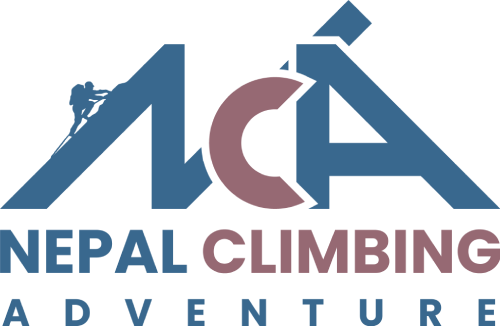
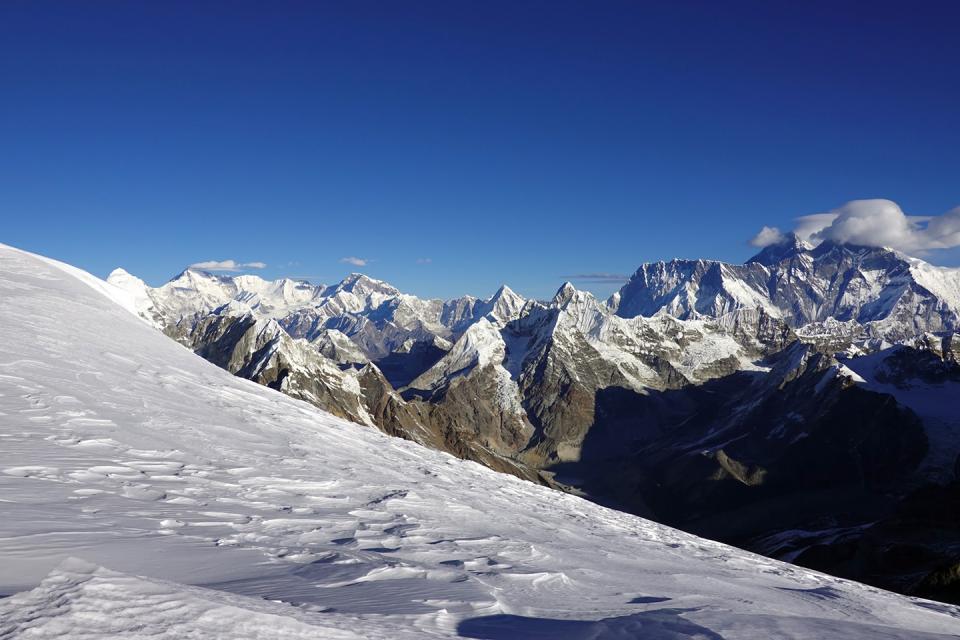
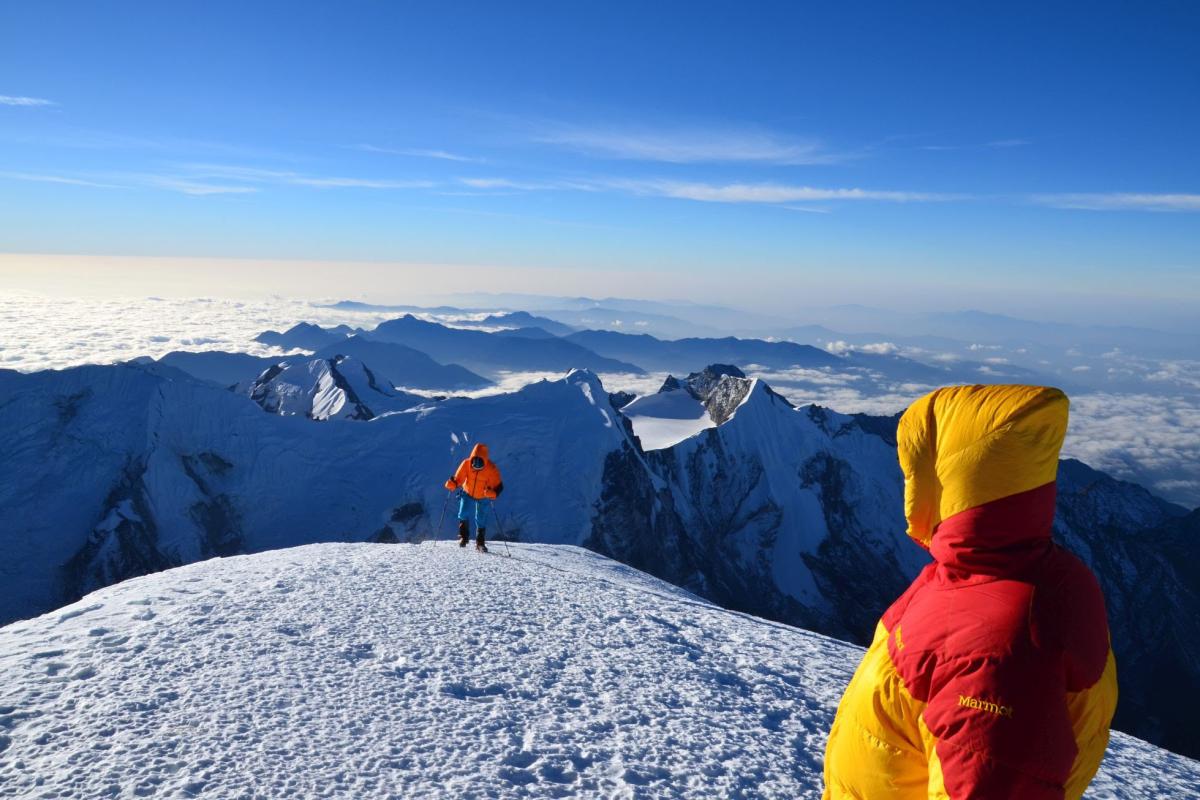
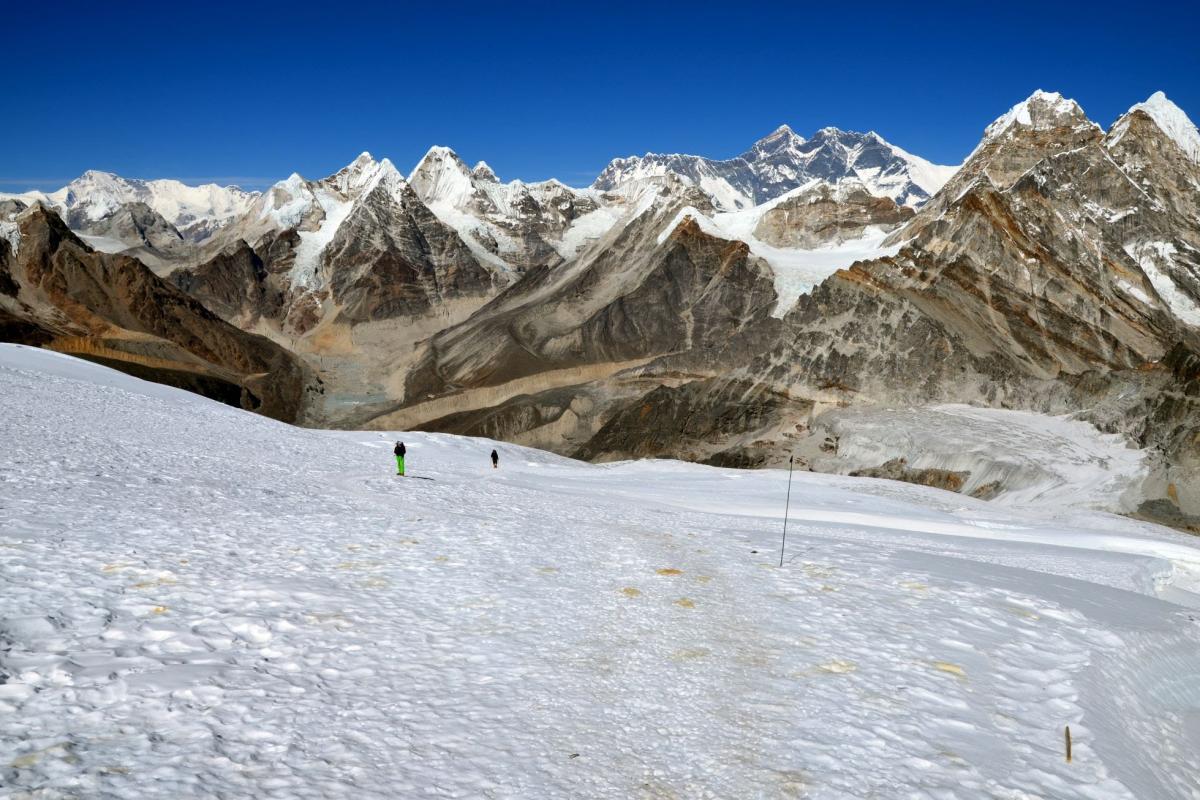
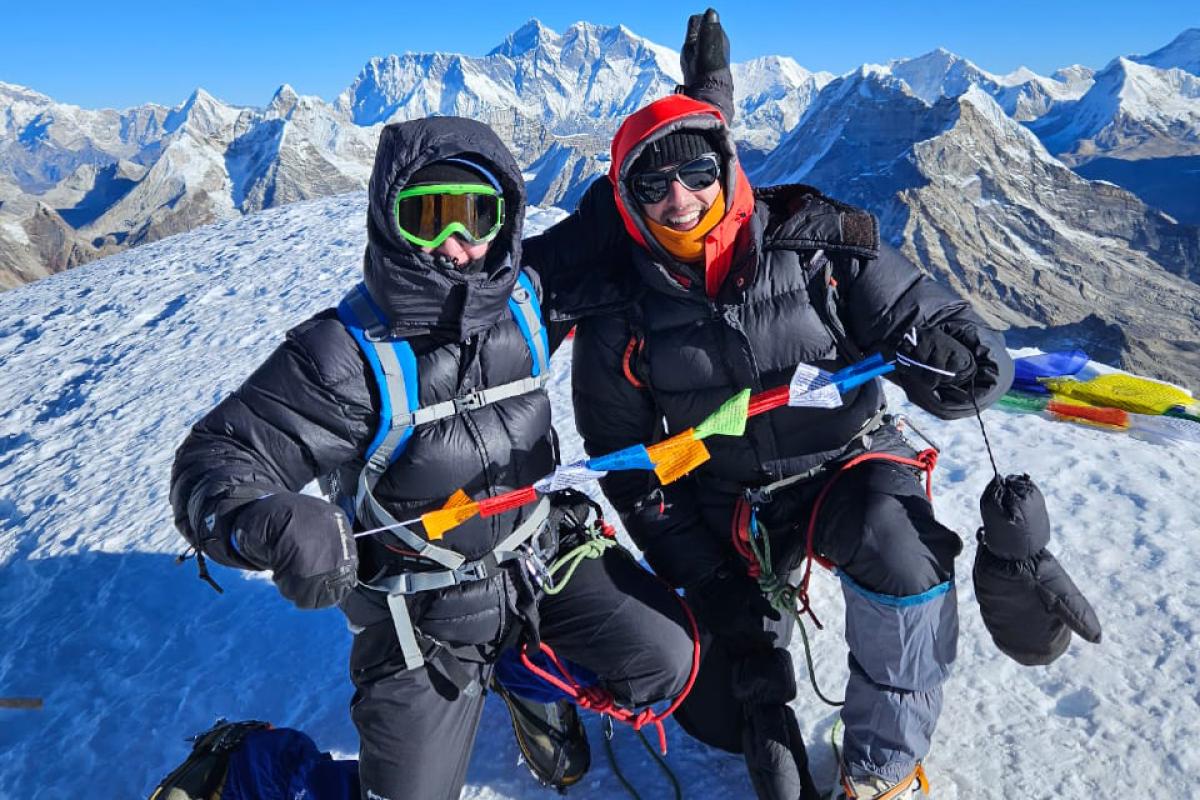
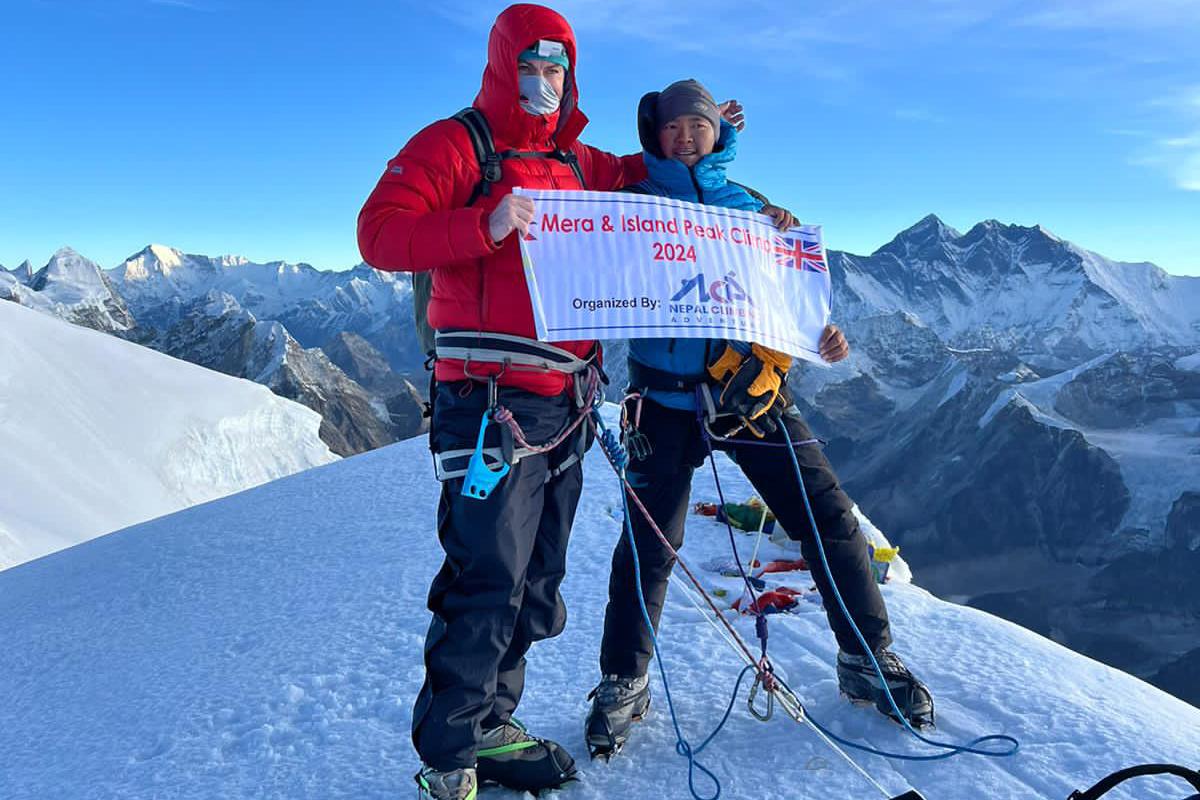
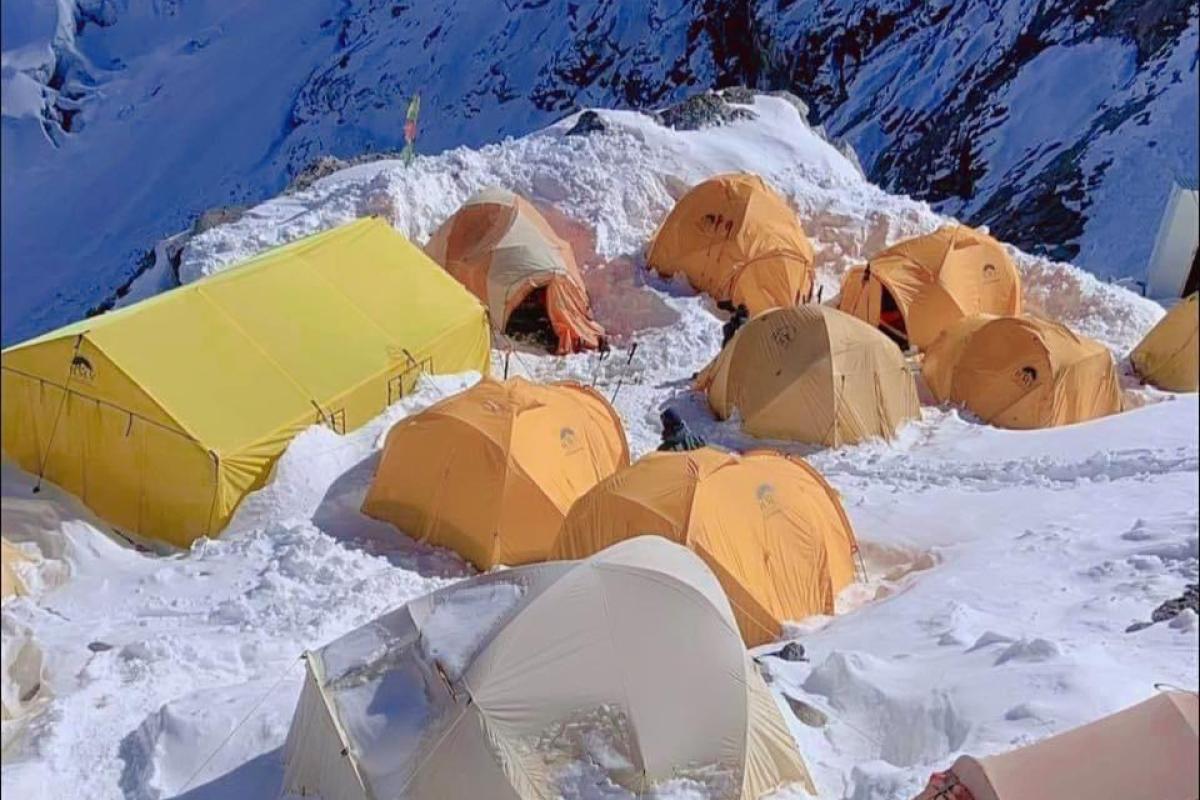
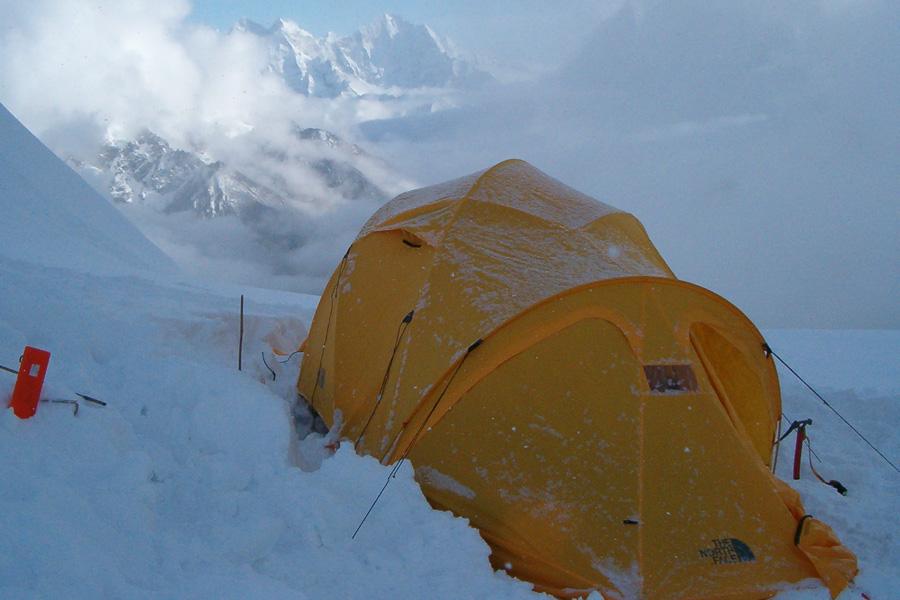
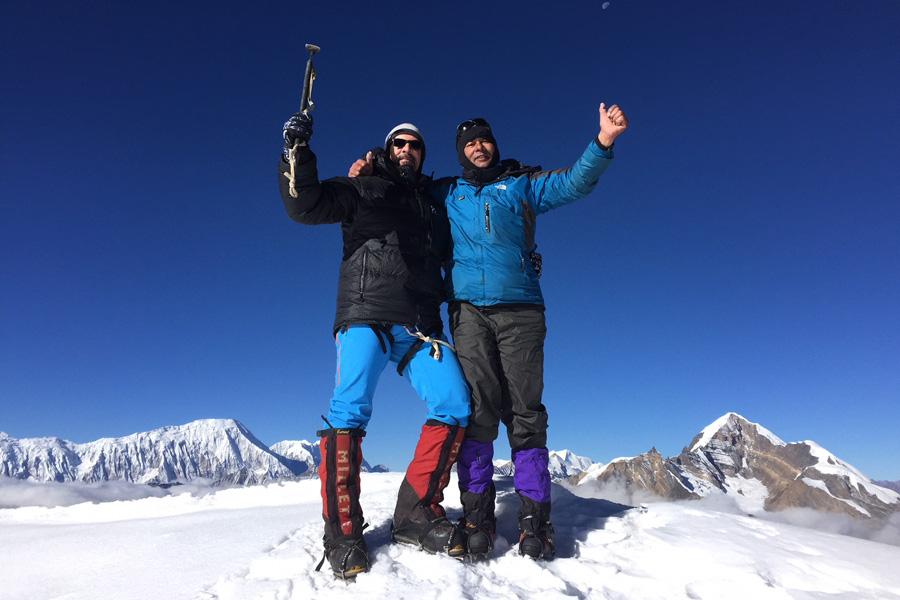
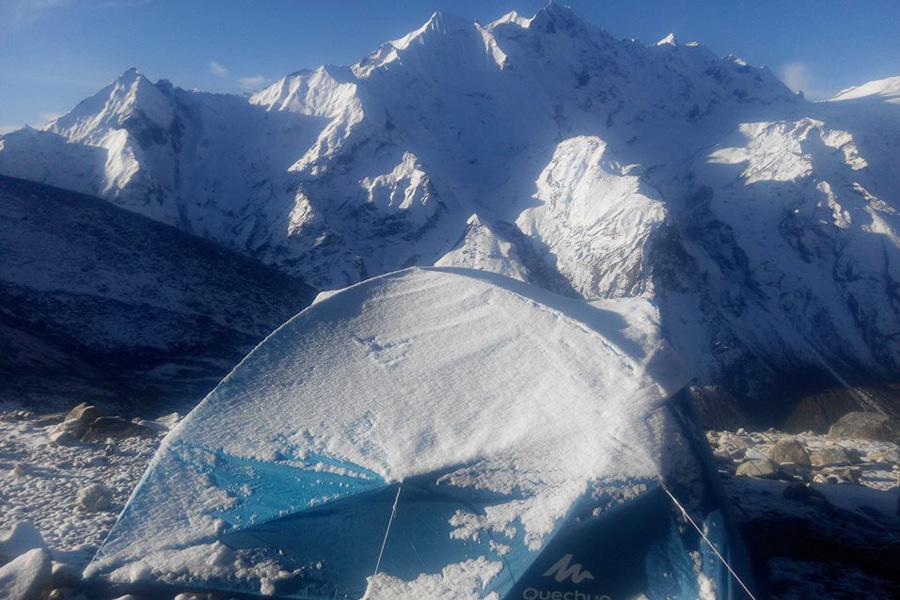
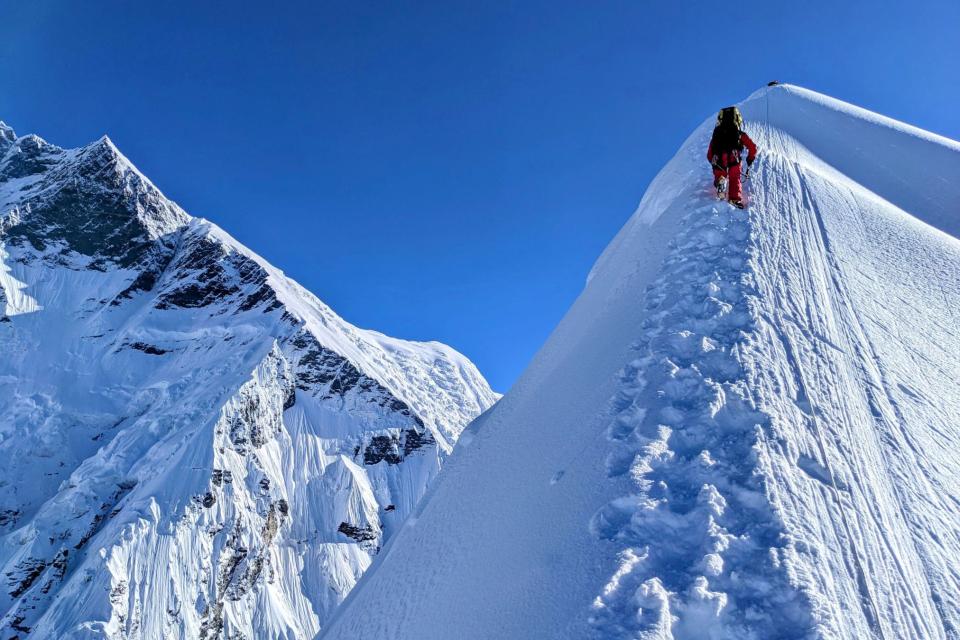
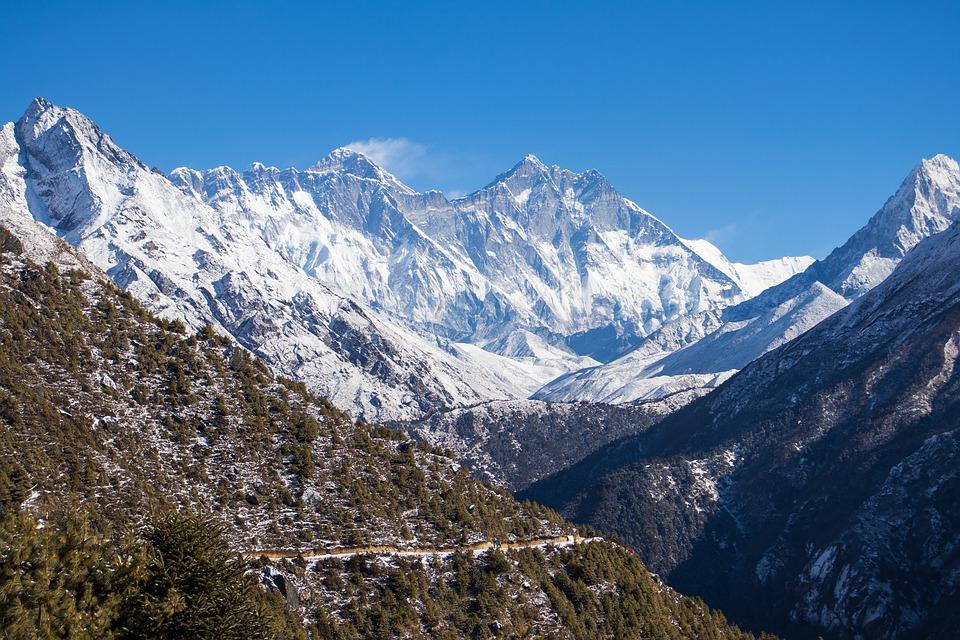
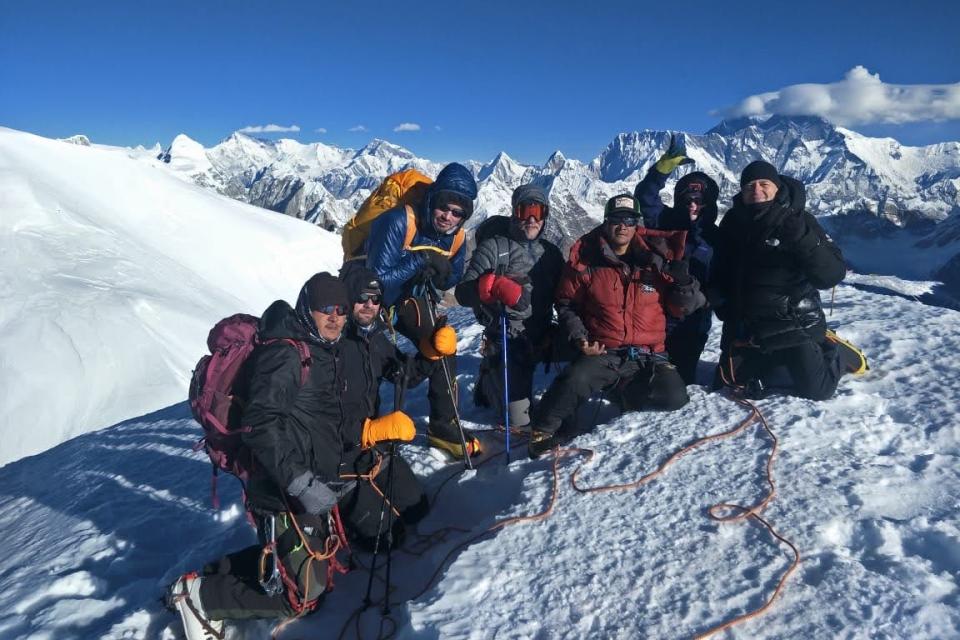
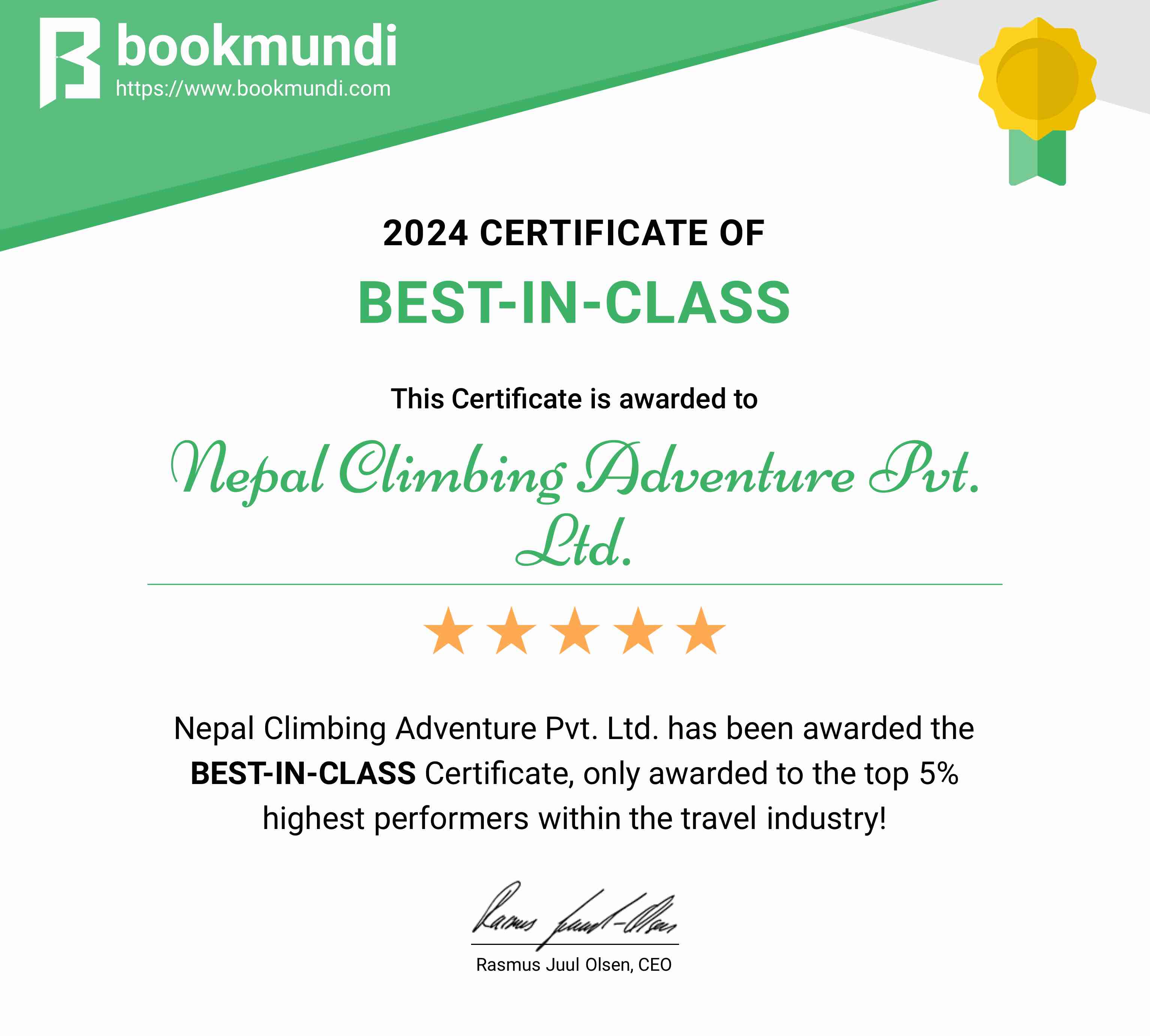
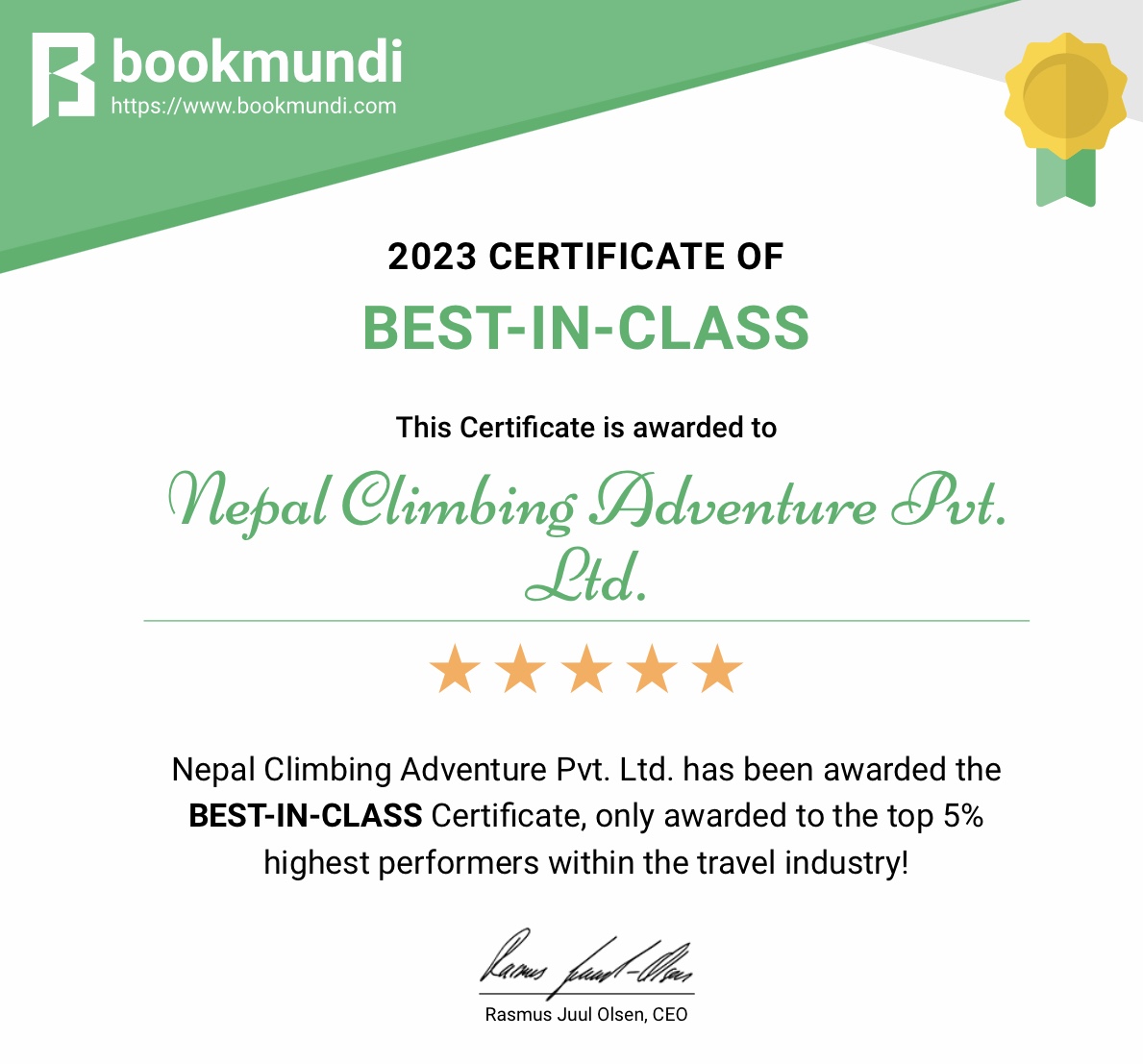
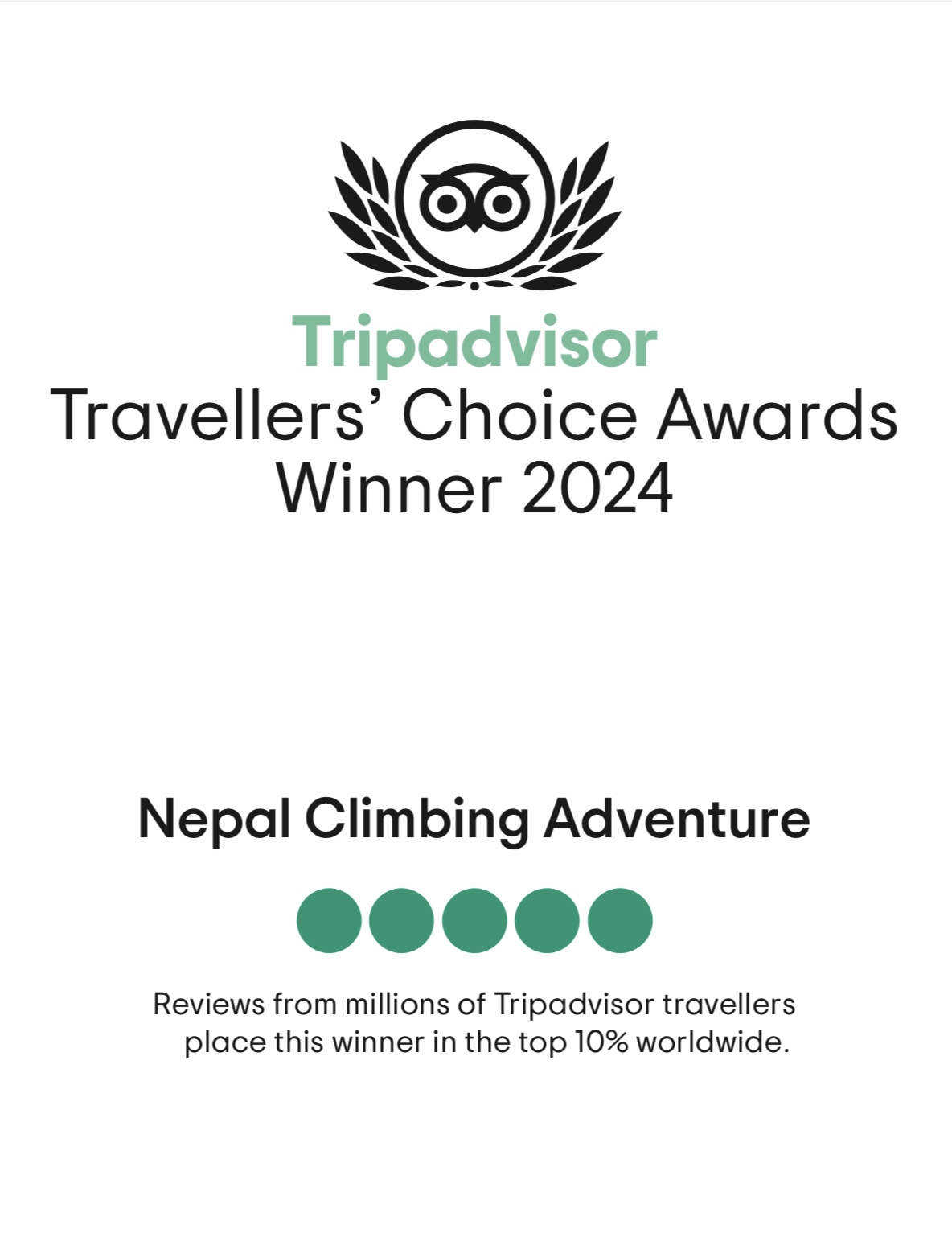
















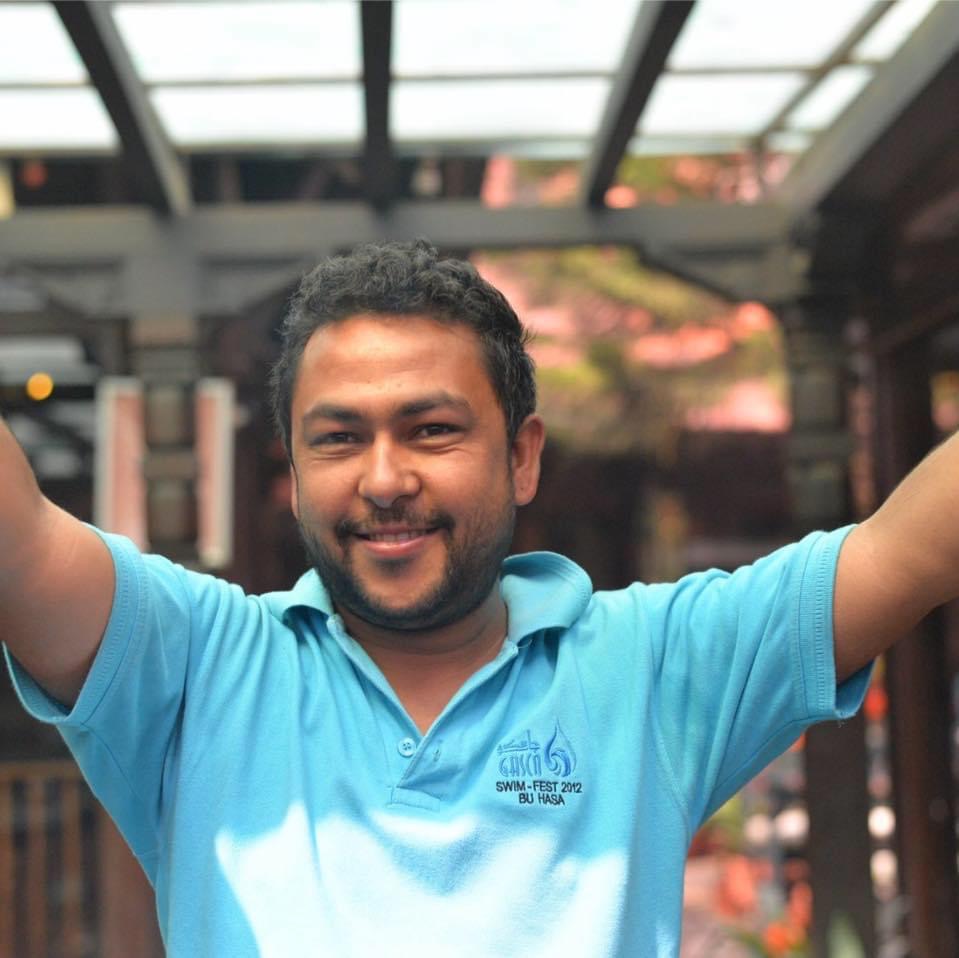 Chris Chhetri
Chris Chhetri